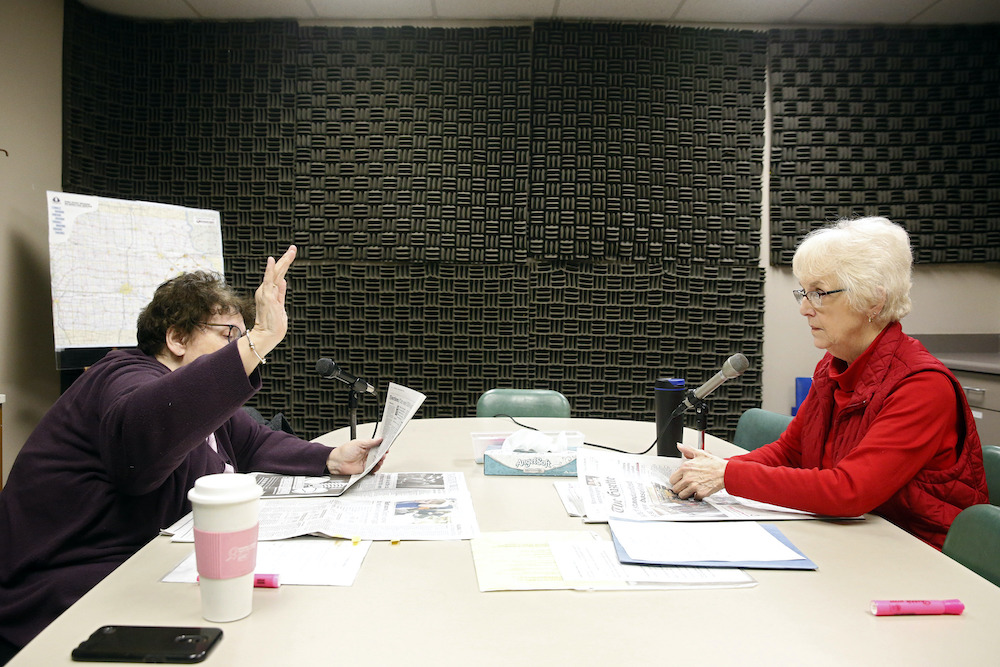
The volume of climate change coverage has been on the uptick in recent years, and hardly a day goes by when climate change and its consequences aren’t in the headlines. However, it remains one of the most challenging—yet important—stories for the media to cover well, given the sheer complexity and magnitude of the problem.
Nieman Reports takes a look at journalists and news organizations who are working in innovative ways to make climate coverage more personal, urgent, and engrossing.
Listen to this article:
The ever-increasing availability of podcasts, audiobooks, and narrated articles has made listening the preferred way for millions of Americans to get news and information. But people with visual impairments, learning disabilities that make reading text difficult, or physical limitations that prevent them from easily obtaining or holding printed material have long relied on audio to stay informed. Since 1969, they’ve been able to rely on a network of radio stations that broadcast human-read narration of everything from national magazines to local newspapers.
Related Reading
Audio Articles are Helping News Outlets Gain Loyal Audiences
How Harvard Business Review, The New Yorker, and The Economist use audio to boost reach and retention
The stations are mostly nonprofits, staffed mostly by volunteers. They broadcast on a frequency that can only be tuned on radios that are made available to those with qualifying conditions; copyright law allows the stations to turn text into audio, but not to make it available to the general public. And they offer something different from traditional news radio — audio of information that was previously only available in print, including not only the major news stories of the day, but obituaries, coupons, comics, box scores, and the latest from favorite columnists.
In the last few years, it’s become easier than ever to access this kind of audio — and more — through a smartphone. And what isn’t available as narration can often be read by a smartphone’s text-to-speech feature. “The iPhone has revolutionized accessibility for people with vision loss just amazingly,” says Lori Kessinger, outreach coordinator of the Audio Reader Network in Lawrence, Kansas.
Meanwhile, the same technological advancements that have made listening easier have devastated the primary sources of stations’ local programming — newspapers. “We read the Des Moines Register every day from nine to noon, and we were having to go get supplemental material,” says Maryfrances Evans, executive director of the Iowa Radio Reading Information Service for the Blind and Print Handicapped and president of the International Association of Audio Information Services (IAAIS), the group that represents stations in many states and countries. There sometimes isn’t enough in the paper to fill three hours.
Rather than let new technology render them obsolete or redundant, these stations are seeking ways to stay relevant — experimenting with new sources of information, original programming, and new platforms.
At first, in their search for supplemental material, Evans’s volunteers read stories from the paper’s website that hadn’t made it to print. Then they started reading from the Iowa Capital Dispatch, a startup nonprofit newsroom. When local news isn’t available, some stations decided to make their own. Last year, for instance, the Recording Library in West Texas produced longform interviews with local candidates for public office.
But while these efforts bring unique information to listeners, it would be difficult for stations to build newsrooms. “As a tiny, tiny, and I mean tiny, nonprofit, we don’t have the capability to do that,” Evans says. And while original content will continue, there are reasons other than cost that reporting isn’t likely to become stations’ main priority. ”We’re not a journalistic outfit,” says Ryan Osentowski, station manager at Radio Talking Book in Omaha, Nebraska. “What we are here for is to read the printed word for those who can’t read for themselves. That is our mission and I don’t ever see that changing.”
With that mission in mind, other stations are thinking about which printed words they read, and how they deliver them. For the foreseeable future, stations need to maintain their broadcast signals. Many reach areas where internet access is slow, unavailable, or prohibitively expensive for residents. A radio information service might be the only 24-hour source of spoken content available. Even with the proliferation of spoken word audio online, Kessinger says, audiences still want obituaries, coupons, and text that isn’t as easily available from news startups or screen reading software.
Stations balance these needs with the demands of listeners who grew up online and are used to getting their information whenever they want it, rather than at a certain time of day. Some stations have begun making podcasts of their original programs. Many have web streams, and a few have smart speaker skills. A streaming listener is just a few clicks from a nearly endless supply of audio produced in high-end studios by teams of reporters and editors. Why turn to a local stream of volunteers — who are, often, quite good narrators — reading the newspaper? It’s the analog nature of radio: Their streams don’t require subscriptions, or a search for the right app or the right story to click. Listeners just turn on the radio and hear whatever the stations are broadcasting. And often, they hear a local voice. As long as there are people with visual impairments, there will be a need for the services these stations offer, Osentowski says.



